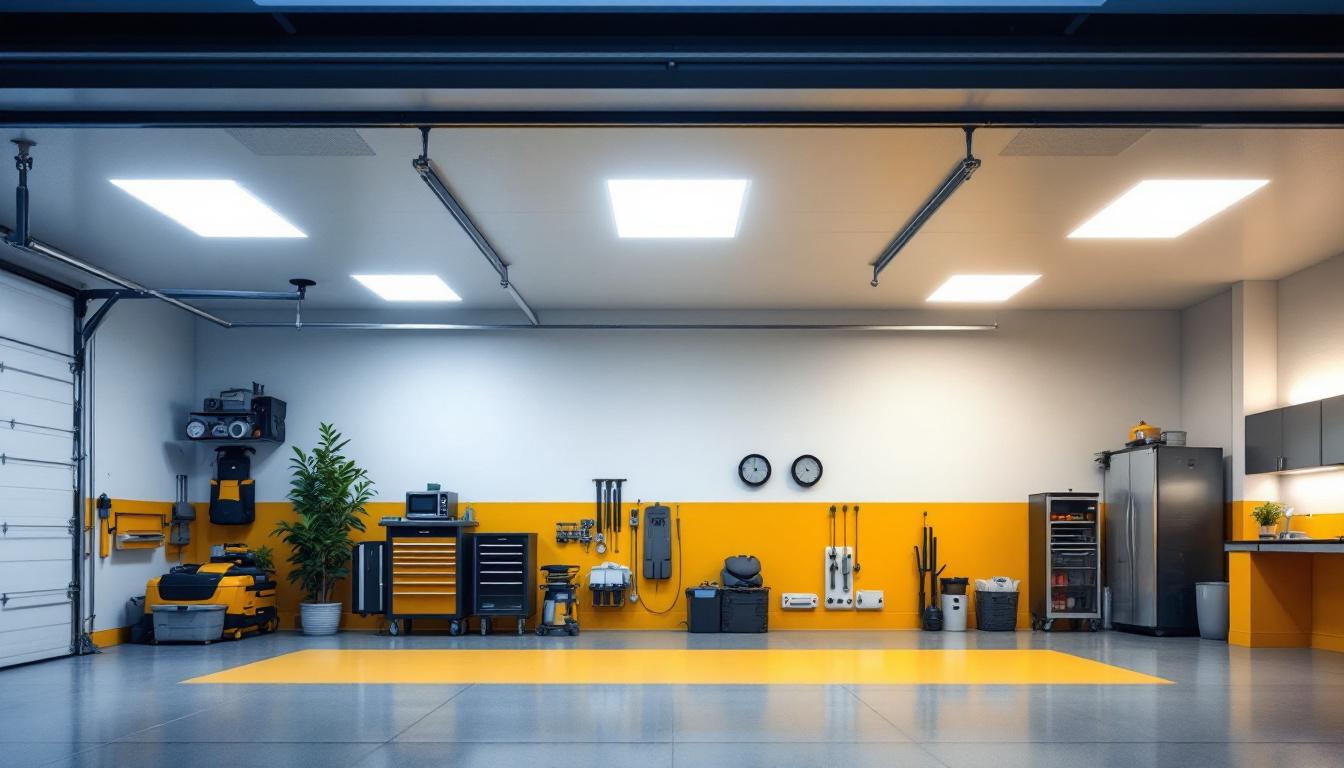
When a light fixture sale pops up, it’s tempting to jump on the apparent discounts. But savvy lighting contractors know that the price tag is just the starting point. What looks like a bargain might not translate into actual savings once installation, maintenance, and long-term performance are factored in.
For example, a fixture with a steep discount but poor energy efficiency can inflate operational costs. Conversely, a slightly higher upfront cost for an LED fixture with a longer lifespan and lower energy draw often pays off faster than the cheapest option on sale. Understanding the total cost of ownership is crucial.
Contractors should also consider the quality of components. A discounted fixture made with subpar materials might lead to more callbacks or warranty claims. These hidden costs can erode profit margins and damage client relationships.
Moreover, the impact of lighting on a space goes beyond mere functionality; it also influences aesthetics and mood. A well-chosen fixture can enhance the ambiance of a room, making it more inviting and comfortable. This is particularly important in commercial settings, where lighting can affect customer behavior and employee productivity. Therefore, investing in quality fixtures that not only perform well but also look good can create a lasting impression and drive business success.
Additionally, staying informed about advancements in lighting technology can provide contractors with a competitive edge. For instance, smart lighting systems that allow for remote control and automation can significantly improve energy efficiency and user experience. By integrating such innovative solutions, contractors can offer clients more value, ensuring that the initial investment leads to substantial savings and satisfaction over time. Embracing these trends not only enhances project outcomes but also positions contractors as forward-thinking professionals in a rapidly evolving industry.
One common oversight during sales is neglecting to verify if the discounted fixtures align with the project’s electrical specifications. Voltage mismatches, incompatible dimming controls, or improper mounting hardware can cause installation delays and additional expenses.
For instance, choosing a fixture designed for residential use in a commercial setting may violate building codes or fail to meet illumination requirements. This can trigger costly rework or even fines. Additionally, the physical dimensions of the fixtures must be considered; a fixture that is too large may obstruct airflow or violate clearance requirements, while one that is too small may not provide adequate lighting coverage. These seemingly minor details can snowball into significant issues if not addressed early in the planning stages.
Lighting contractors must ensure that fixtures on sale comply with local, state, and national regulations. This includes energy codes like Title 24 or ASHRAE standards, as well as safety certifications such as UL listing or DLC qualification.
Overlooking these factors can jeopardize project approvals and certifications. Even if a fixture is heavily discounted, non-compliance can stall a job or result in penalties, negating any initial savings. Moreover, staying abreast of evolving regulations is crucial; standards can change frequently, and what was compliant yesterday may not be today. This necessitates ongoing education and communication with suppliers to ensure that all products meet current requirements, thus safeguarding the project from potential legal and financial repercussions. Furthermore, engaging with local code officials early in the design process can provide insights into any specific requirements that might affect fixture selection, ensuring a smoother path to project completion.
While lumens measure brightness, they don’t tell the whole story. Color rendering index (CRI) and correlated color temperature (CCT) are equally important for creating the desired ambiance and functionality. The CRI scale ranges from 0 to 100, with higher values indicating a more accurate representation of colors. For instance, a CRI of 90 or above is often preferred in settings where color differentiation is crucial, such as art galleries or design studios. In contrast, lower CRI values may lead to a washed-out appearance, making it difficult for individuals to distinguish between subtle shades.
Fixtures on sale might have lower CRI values, which can distort colors and affect the visual comfort of occupants. For retail or hospitality clients, this can impact product presentation or guest experience. The CCT, measured in Kelvin, indicates whether a light source appears warm (lower Kelvin values) or cool (higher Kelvin values). A warm light (around 2700K) can create a cozy atmosphere in a restaurant, while a cooler light (around 5000K) may enhance focus and alertness in an office setting. Selecting the right combination of CRI and CCT is essential for achieving the intended mood and functionality of a space.
Understanding how light spreads is essential. A fixture with a narrow beam angle might create unwanted hotspots or shadows, while a wide angle may not provide sufficient task lighting. The beam angle is typically measured in degrees and can significantly influence how light interacts with the environment. For example, a narrow beam angle of 15 degrees is ideal for highlighting specific features, such as artwork or architectural details, while a wider beam angle of 60 degrees is better suited for general illumination in larger spaces.
Sales often focus on price and brightness, but contractors should analyze photometric data to ensure the fixture’s beam pattern fits the space and application. Additionally, the distribution of light can affect energy efficiency and overall comfort. For instance, fixtures that provide an even distribution of light can reduce glare and eye strain, making them more suitable for workspaces where prolonged focus is required. Understanding these nuances allows designers and contractors to create well-lit environments that not only meet functional needs but also enhance the overall aesthetic appeal of the space.
Discounted fixtures sometimes come with limited or no warranty coverage. Lighting contractors must scrutinize warranty terms carefully. A shorter warranty period or exclusion of certain components can lead to costly repairs or replacements down the line. It’s essential to understand what specific failures are covered and whether the warranty is pro-rated or full. For example, some manufacturers may only cover defects in materials but not in workmanship, leaving contractors vulnerable to unexpected costs if an installation fails prematurely.
Additionally, supplier support matters. Reliable vendors provide technical assistance, easy access to replacement parts, and clear documentation. When a sale is too good to be true, it might mean corners have been cut in after-sales service. A reputable supplier often has a dedicated support team that can assist with installation challenges, troubleshooting, and maintenance advice, which can save contractors significant time and money. Furthermore, the availability of comprehensive product manuals and online resources can enhance the overall experience, ensuring that contractors are well-equipped to handle any issues that arise during the lifecycle of the lighting fixtures.
Moreover, the importance of understanding the supplier’s reputation cannot be overstated. Researching reviews and testimonials from other contractors can provide insights into the reliability of both the products and the support offered. A supplier with a strong track record is more likely to stand behind their products and provide the necessary assistance when issues occur. Additionally, establishing a good relationship with suppliers can lead to better terms and quicker resolutions in times of need, making it a crucial aspect of long-term project planning and execution.
Fixtures on sale might require specialized tools or more time-consuming installation processes. This can increase labor costs and extend project timelines.
For example, a decorative fixture with intricate mounting brackets or fragile components might slow down the crew, especially if it’s unfamiliar or lacks clear instructions. Contractors should factor in these potential challenges when evaluating sale items.
Moreover, the type of fixture can significantly influence the installation process. For instance, LED lighting fixtures often come with unique wiring requirements that differ from traditional incandescent options. This may necessitate additional training for the installation team or even hiring an electrician, which can further inflate costs. Additionally, fixtures that require integration with smart home systems can add layers of complexity, as they may need to be synced with existing technology, requiring both technical expertise and time to ensure everything operates seamlessly.
Another aspect to consider is the potential for unexpected complications during installation. For example, if the existing electrical infrastructure is outdated or incompatible with the new fixture, it may require upgrades or modifications, leading to unanticipated expenses. Furthermore, if the installation site has limited access or requires scaffolding for high-mounted fixtures, this can also extend labor hours and increase safety concerns. Thus, it is essential for contractors to conduct thorough site assessments and prepare for any contingencies that may arise, ensuring a smoother installation process and minimizing the risk of budget overruns.
More clients are demanding sustainable lighting solutions. Fixtures with poor energy efficiency or non-recyclable materials might not meet these expectations, even if they’re on sale.
Lighting contractors can add value by choosing fixtures that align with green building certifications like LEED or WELL. This not only benefits the environment but can also enhance a contractor’s reputation and open doors to new projects.
Light fixture sales can be a great opportunity to save money, but only if contractors look beyond the obvious. Evaluating total cost of ownership, compatibility, performance metrics, warranty, installation requirements, and sustainability will help avoid pitfalls.
Ultimately, the goal is to deliver lighting solutions that satisfy clients, comply with regulations, and maintain profitability. Careful scrutiny during sales events ensures that discounted fixtures contribute to, rather than detract from, project success.
Ready to elevate your lighting projects while maximizing your profits? Look no further than LumenWholesale for a vast selection of top-quality, spec-grade lighting products at unbeatable wholesale prices. With our commitment to cutting out the middleman, you can trust that you’re getting the best value without the inflated markups. Our products meet the highest industry standards, ensuring reliability and high performance for every project. Plus, with free shipping on bulk orders, you can enjoy premium lighting solutions at the best price, without any hidden fees. Don’t miss out on the perfect blend of quality, affordability, and convenience. Wholesale Lighting at the Best Value is just a click away.

Discover the benefits of LED flush mount garage lights and learn how to optimize your garage lighting for efficiency and style.

Discover the ultimate guide to antique style LED bulbs for lighting contractors, with expert tips, benefits, and industry insights to elevate your projects—download now!.

Discover essential tips for lighting contractors to avoid common pitfalls when dealing with tanning lamps and beds.

Discover innovative strategies from smart lighting contractors as they harness the power of toggle switches to revolutionize home and commercial lighting solutions.